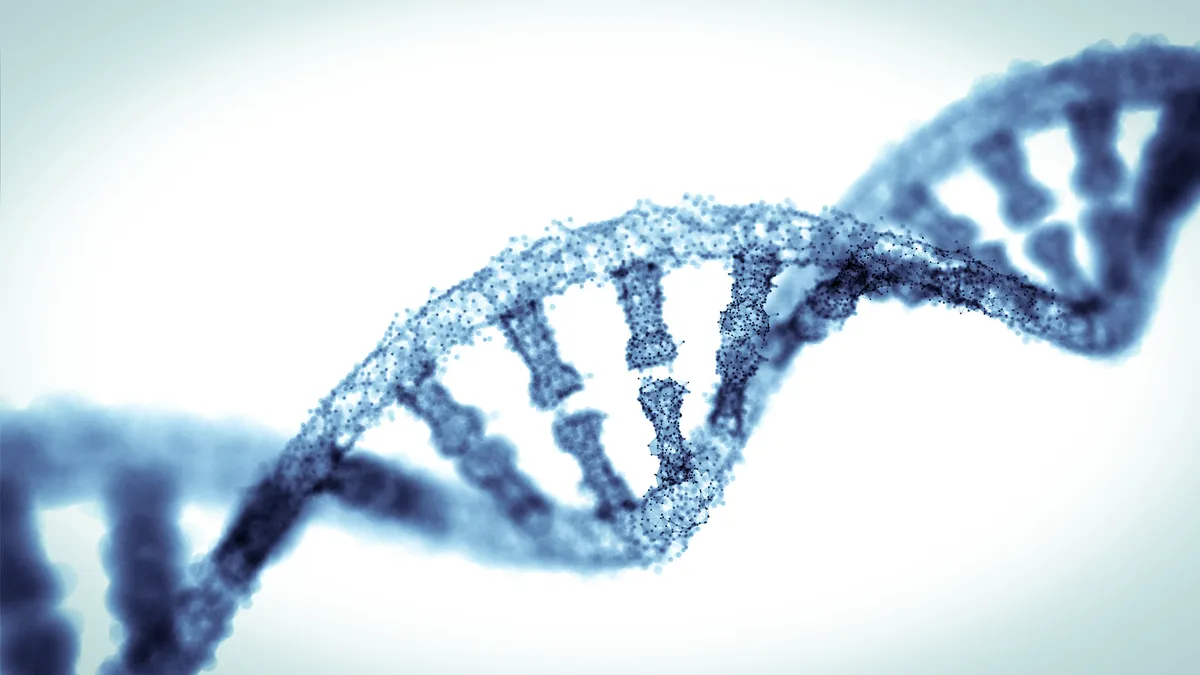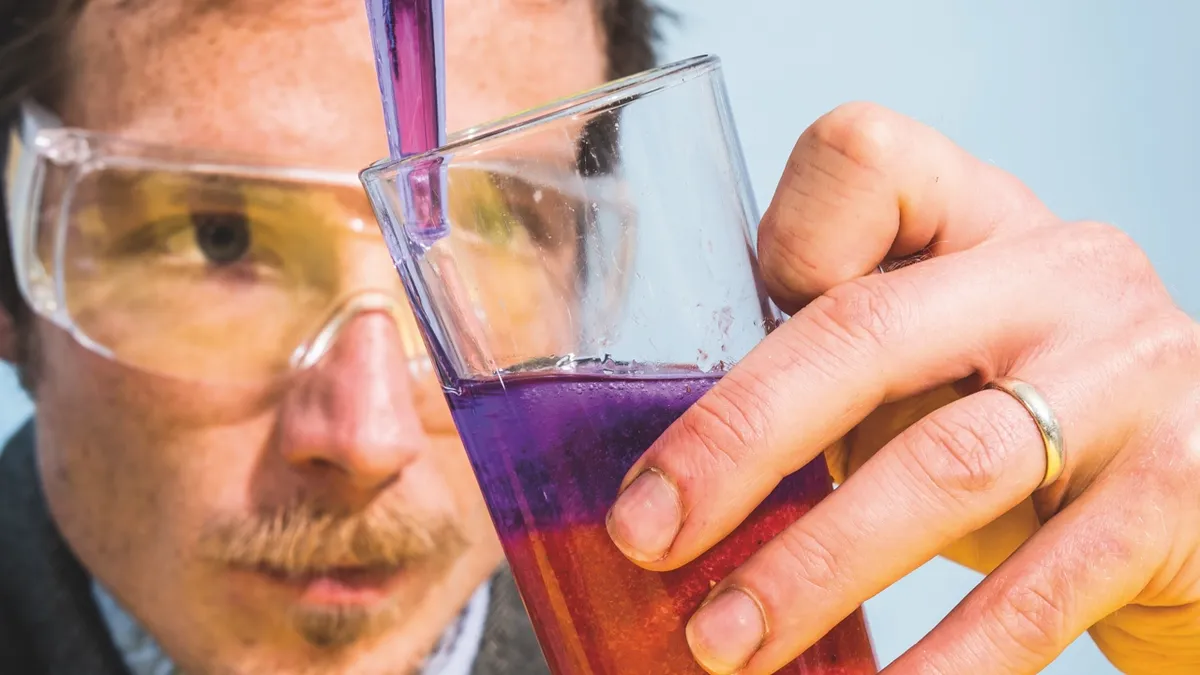Deoxyribonucleic acid, or DNA as it's usually called, has an appealing mystique. “It’s in our DNA” is now a standard refrain for marketers and individuals trumpeting some essential virtue: honesty, courage, integrity, wholesomeness.
The hype is often misplaced, but undoubtedly DNA is a wondrous molecule with unique, amazing features.
DNA is the only molecule capable of reproducing itself. DNA is present in almost all living cells of all living things. Only DNA, and no other molecule, carries the ability to copy and then pass heritable information to subsequent generations. DNA is, indeed, the essence of life itself.
Despite these apparently magical tricks, DNA follows the ordinary laws of science and nature. Sometimes those rules are not obvious, but a little scientific digging and reliance on robust evidence will ferret them out.
What does DNA look like?
Physically, DNA is a chemical in the form of a twisted, extendable ladder, the iconic 'double helix'. The 'ladder' is composed of 'rungs' and sugar-phosphate 'siderails'.
The rungs consist of a pair of the small chemical bases: adenine, thymine, cytosine, and guanine, abbreviated A, T, C, and G, respectively Crucially, adenine (A) pairs only with thymine (T), and cytosine (C) only pairs with guanine (G). Only the pairs of either A:T or C:G fit as rungs between the two siderails.

The weight and structure of the DNA ladder naturally twists it into the double helix shape. And the ladder molecule can extend great distances. In a human cell, for example, the number of DNA bases pair rungs in the DNA runs over three billion, measuring over six feet in length.
However, in multicellular organisms like humans, the DNA does not remain as one long strand, but is cut and tightly packed into chromosomes.
Human DNA extracted as a single molecule from a single cell extends to just under two metres long, but is ordinarily segmented and stuffed into 23 pairs of chromosomes in each cell.
What does DNA do?
All bacteria, plants and animals, including humans, use DNA as the repository of their hereditary information. That is, the recipe to confer every genetic trait, from eye colour to blood type, is carried by segments of DNA stored within each cell of the organism. These DNA segments carrying genetic information are called genes, the root word of genetics.
What differs between human DNA and tomato DNA, or, for that matter, the DNA between two humans, is the precise sequence of DNA base pairs A, T, C, and G. By way of analogy, two different recipes in an English language cookbook may use the same 26 letters to make words but differ in the exact sequence of those same 26 letters, resulting in different recipes.
Read more about genetics:
- Genetically-modified marine bacteria able to produce synthetic spider silk
- Epigenetics – bridging the gap between nature and nurture
- New genetic clues to anxiety uncovered
Although DNA is physically the same ‘double helix’ composed of long segments of A:T and C:G base pairs in all living things, the exact sequence of those bases varies from one organism to another. It is the order of bases that provides the instructions to produce, say, insulin in human pancreatic cells or photosynthetic enzymes in plants. A plant’s DNA lacks the base sequences instructions to make insulin, and human DNA lacks instructions for photosynthetic enzymes.
In any organism, such as a given human, the DNA in every cell has the same base sequence as every other living cell in that human.
The difference between a liver cell, and a skin cell is that while both activate ('express') those genes required for basic living processes, the liver cell expresses those genes for liver proteins. Other genes remain present, but are not expressed. Meanwhile, skin cells express the genes unique to skin proteins, but liver (and other) genes are silenced.
Does every living thing have DNA?
The language of genetics is the same in all of life. A gene from any cell of any living thing can be copied, transferred and understood by any other living thing to make the same protein.
For example, human insulin is now made by microbes genetically engineered with the human DNA recipe for human insulin. That is, a copy of the human insulin gene is transferred to microbes, and those microbes read the human insulin gene recipe and make insulin, even though the microbes — having no blood or blood sugar — have no use for insulin. Similarly, most hard cheeses now are made with chymosin (a milk clotting enzyme) generated by genetically modified microbes.
From a scientific perspective, we can confidently state that life began at least once, about 3.5 billion years ago.

A more interesting question, scientifically, is “Did life arise more than once?”
Answer: unlikely. The evidence is based on DNA being the sole common feature of all living things. More importantly, the language DNA uses to convey information is common to all; the same language is read and understood by all living things. And most importantly, the DNA language is not just the common language used by all species; it is the only language used by any species.
There are no other languages of genetics.
When considering the number of potential languages DNA might have used instead, the fact that all known life forms use the same language of DNA to communicate the same information is compelling evidence that life arose only once.
Does DNA prove that evolution is real?
The fact that all living things use DNA as their physical hardware, and share a single language of DNA as their intellectual software, is evidence that all living things derive from a common ancestor way back when.
Other evidence includes gene homology (a similar DNA base sequence of similar genes in diverse species) and a common synteny (the linear order of adjacent genes in the DNA of a chromosome).
The consensus in the scientific community is that life started once and that evolution provided our current diversity of living things. To be sure, scientists argue strenuously over the mechanics of evolution, and timing, and duration, and other minutia concerning evolutionary processes.
Nevertheless, these arguments do not challenge the scientific consensus: Evolution is real.
When did we first start exploring DNA?
Curious humans have always been interested in heredity, pondering how children acquired the features of their parents. But scientists didn’t learn that DNA carried the hereditary information until the mid 20th Century. And we didn’t know the structure of DNA until 1953. And we didn’t know how the genetic information was conveyed within the DNA molecule for some years after that.
More recently, molecular geneticists have learned not only how to read the information carried by a DNA strand, but also how to edit or supplement it. These innovations allow development of a number of commercial products such as the aforementioned insulin and cheese.
When did DNA become so popular?
DNA is often in the news these days. But it wasn’t always so popular. A series of events in the mid-1990s thrust DNA into the spotlight.
Colin Pitchfork’s murder trial in the UK and O J Simpson’s murder trial in the USA sparked public interest in the forensic use of DNA.
Cloning of Dolly the sheep in Scotland raised the spectre of the technical feasibility of cloning humans, a science fiction nightmare.
Then came the appearance on our dinner plates of genetically engineered crops and foods, the fearsome genetically modified organisms, GMOs. All of these high-profile stories were based on the use — or perhaps abuse — of DNA.
Read more about DNA:
- 'DNA fingerprinting' may help to decipher Dead Sea Scrolls
- DNA: a timeline of discoveries
- Doughnut-shaped cancer DNA makes tumours 'more aggressive'
The rocketing popularity of DNA is reflected in the rise of direct-to-consumer DNA testing. For a relatively small fee, several companies will conduct a DNA analysis from the cells in your cheek swab or spit sample. However, these DNA tests are not 100 per cent accurate.
We are all genetically closer to our fellow humans than we might realise. All humans share over 99.9 per cent of their DNA base sequence, so all of the genetic differences between you and your neighbour, or between a Kalahari bushman and a Laplander, are attributable to just 0.1 per cent of the respective DNA.
Even so, the differences, although small, can have dramatic consequences. Your DNA sequence determines your basic blood type (A, B, AB, or O), hair and eye colour, whether your earlobes dangle, and whether you can roll your tongue.
Less trivially, your DNA sequence makes you more (or, if you’re lucky, less) susceptible to certain types of cancer, heart disease, blindness, and over 200 other health-related conditions.
So, how does DNA information work?
The best metaphor illustrating the information storage function of DNA is the encyclopedia of recipes.
Many people cherish their family recipe books handed down from ancestors. The “secret, family” recipes are sometimes supplemented or annotated, and then shared with children, generation after generation, thus perpetually preserving, albeit with minor changes, the family’s culinary tradition.

In principle, the full complement of genetic information in an organism — the genome — is no different. The genome uses DNA instead of paper to convey the family’s precious intellectual property. Our genome is like that multivolume family encyclopedia of recipes. A gene provides instructions and information to the cell, telling the cell to make specific proteins in specific tissues, at specific times, and under specific conditions.
Now, imagine your own family cookbook collection consisting of 23 volumes, with about 20,000 recipes in total, the approximate number of gene recipes in the human genome. We store most of our DNA in 23 pairs of chromosomes, for a total of 46 'volumes' in each cell. Each chromosome consists of a long DNA chain, with each metaphorical recipe corresponding to a shorter segment of DNA along the chain.
What are some practical applications of DNA information?
As scientists continue to study and understand DNA, they continue to innovate and devise practical applications.
Police now use DNA to identify long forgotten cold cases. Genealogists use DNA to compile and confirm family trees dating back centuries. Historians use DNA to identify the fragmented remains of lost soldiers, from WWI infantry missing in action at Vimy Ridge to King Richard III under a car park in Leicester.
Doctors use new drugs and medical treatments, including those to combat cancer and the coronavirus, developed from molecular genetic manipulation. And fertility experts help infertile couples have biological children. Understanding DNA and how it functions leads to new technologies while simultaneously enhancing our fascination with the molecule of life.
Still have questions? More on DNA and genetics:
- Could we bring back an extinct species using DNA, Jurassic Park style?
- Could we genetically modify an animal so that it could live unaided on another planet or moon?
- Can a DNA test differentiate between a person's father and brother?
- Would alien life need to have DNA?
Alan McHughen's book, DNA Demystified: Unravelling the Double Helix, is out now (£19.99, Oxford University Press).
- Buy now from Amazon UK, Foyles and Waterstones